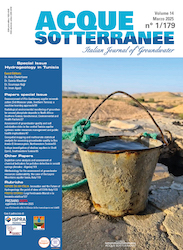Methodology for the assessment of groundwater resources sustainability: the case of the Lepini mountains aquifer basin, Italy

All claims expressed in this article are solely those of the authors and do not necessarily represent those of their affiliated organizations, or those of the publisher, the editors and the reviewers. Any product that may be evaluated in this article or claim that may be made by its manufacturer is not guaranteed or endorsed by the publisher.
Authors
The effect of climate change on groundwater recharge is becoming increasingly important and requires a resilient management model for a safe water supply. A larger view of the system must be adopted, and humans must become only a part of the whole. This work presents a methodology to evaluate the sustainability of water resources in a watershed using a simplified water balance method. The methodology uses available data from weather stations and the historical analysis of temperatures and precipitations over 95 years. The results obtained in a previous project were considered to extend the plain weather station data over the entire watershed. Results present a good agreement and allow us to conduct a preliminary analysis of the water system’s reliability. The Mt. Lepini aquifer appears in a critical situation where the discharge is directly connected to the recharge with a failure rate of 83%, considering the average mean discharge of 427 Mm3/y. The management of this water system should be conducted considering all the ecosystem services, not only the water supply to human activities but also the existing water ecosystems present downstream to the spring systems.
How to Cite

This work is licensed under a Creative Commons Attribution-NonCommercial 4.0 International License.
PAGEPress has chosen to apply the Creative Commons Attribution NonCommercial 4.0 International License (CC BY-NC 4.0) to all manuscripts to be published.














